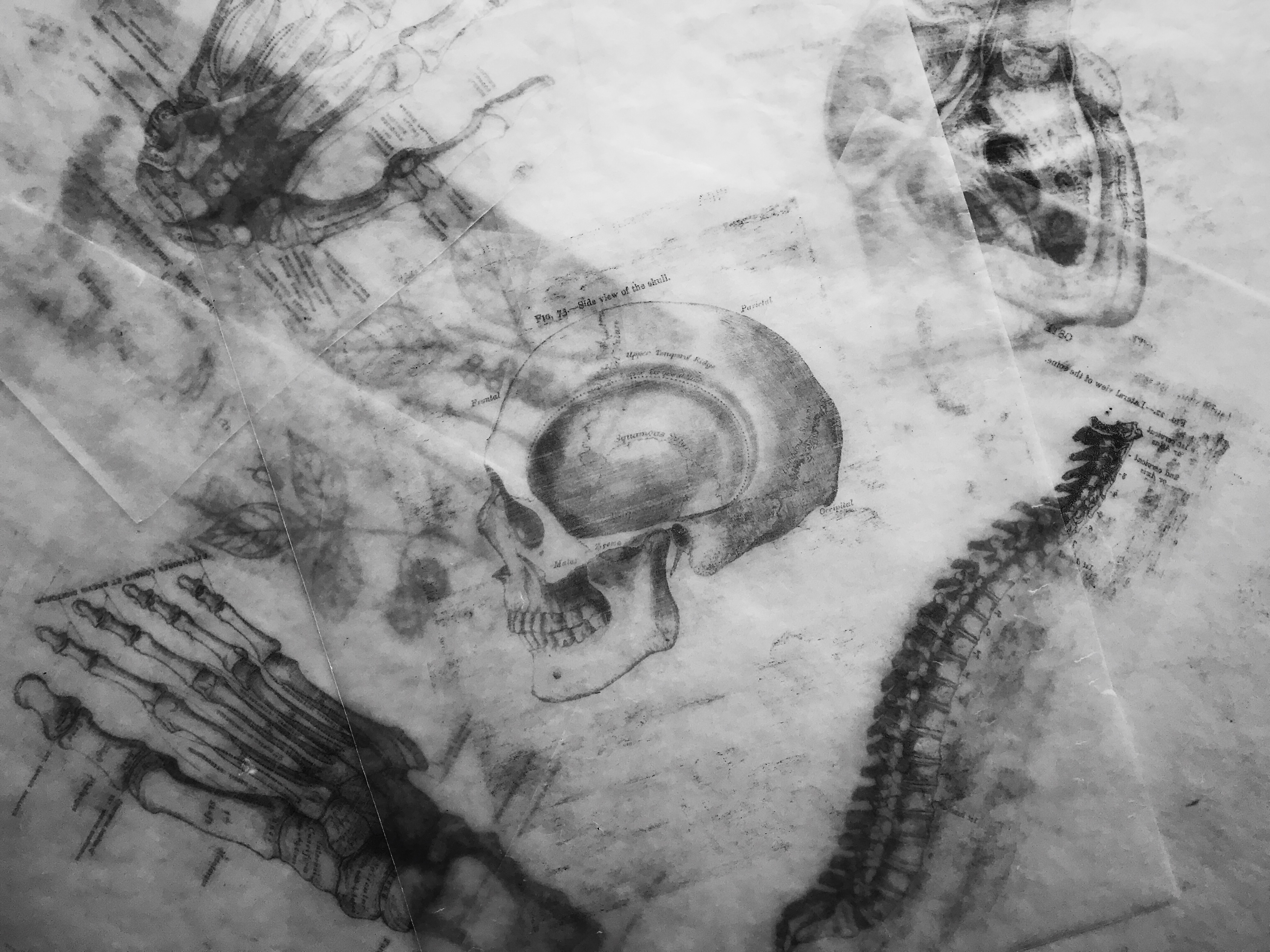Osteopathic Treatment vs Chiropractic Adjustment: What's The Difference?
Osteopathic treatments are often very misunderstood. People commonly express having no idea what osteopathic medicine is and what to expect from osteopathic treatment. Many often come into our practice asking how osteopathic treatments are different from chiropractic adjustments. From their research, patients come in with the wrong impression that osteopathic treatment is not much different from a chiropractic adjustment. Some of our patients have both and do not feel they are the same. In this article, we want to discuss the similarities and differences from an osteopathic physician's perspective.
Training

Osteopathic Medical School
Osteopathic treatments are performed by osteopathic physicians (or DOs). As part of their training, DOs attend a four-year osteopathic medical school. DO students take the same courses that their MD counterparts take. Additionally, DOs learn osteopathic philosophy and hands-on training in osteopathic manipulative medicine. DOs take the COMLEX board examination and are eligible to take the same general board examinations that MDs take (USMLE). Upon completion of osteopathic medical school, DOs must attend residency in any specialty, including osteopathic manipulative medicine. Residency training can include in-patient training of all ages.
Finally, residency-trained specialists in osteopathic manipulative medicine take board examinations showing competency to become board-certified in hands-on osteopathic treatment. A DO can practice osteopathic manipulative medicine after a traditional rotating internship, but one cannot be board-certified from this route. From start to finish, this training takes seven years to complete to become a fully-licensed board-certified specialist in osteopathic manipulative medicine.
Chiropractic School
Chiropractors (DCs) perform chiropractic adjustments. Chiropractors attend chiropractic school. Chiropractic training can be completed in as little as three and a half years. Chiropractic students must pass board examinations by the National Board of Chiropractic Examiners (NBCE) to be eligible to practice. Chiropractic board examinations are not equivalent to medical board examinations that physicians (MD/DO) take. Chiropractors are not required to complete a residency to start practicing afterward. From start to finish, chiropractic training takes 3 1/2 years to complete.
Of the two, osteopathic training is full-medical training and is significantly more intense and in-depth compared to chiropractic training. This training can include in-patient and out-patient training. For that reason, it can take twice as long to become a DO vs a DC.
Philosophy
Understanding the underlying philosophy that guides a treatment is important to understanding how the osteopathic treatment is different from a chiropractic adjustment. It may not seem like it matters very much, but the difference in philosophy can lead to very different approaches to the body. There can be overlap in these philosophies. Let's look at these:

(The above image is provided by BD Hypno Plus https://www.briandcruzhypnoplus.com/) _
Osteopathic Philosophy
The osteopathic philosophy that guides osteopathic treatment has four primary tenets. The first tenet is the interrelationship of structure and function. DOs must know and understand all anatomy in-depth; not just intellectually, but must also understand how abnormal anatomy feels different from normal anatomy. The second is that the body is a unit with health comprising of mind, body, and spirit. Osteopathic physicians understand that when any part of the body is dysfunctional, it will affect the whole system and there can be many factors in overall health.
With this approach, a DO must be knowledgeable and skilled with all anatomy and understand how seemingly different parts are connected. Where one has pain, is not necessarily where the underlying problem is. The third is the self-healing mechanisms of the body. Osteopathic treatment often taps into and uses the self-healing of the body. DOs understand that the body knows how to heal itself better than the brightest mind on the planet, therefore, they tap into to influence and aid the self-healing of the body to make corrections.
The last tenet is that rational treatment is based on the above principles. It leaves the approach open as long as it follows the above principles. Different DOs may interpret the principles in different ways and so there can be many different styles of treatment as a result.
Chiropractic Philosophy
Chiropractic philosophy is not as clear. From basic research, chiropractic philosophy has been debated since its inception. There seem to be different groups of chiropractors that have different philosophies. According to the University of Minnesota, the basic chiropractic philosophies are that "The body naturally seeks proper balance among all its systems, which are meant to work together" and "Proper structure is necessary for proper function."
More traditionally, there is the "theory of subluxation," which is based on spinal misalignments or subluxations causing mechanical nerve impingements. There seems to be a whole spectrum of chiropractic philosophy. One of the common themes according to one chiropractor is the belief that "spinal manipulations have profound effects on the nervous system, which in turn affects other systems." The health of the nervous system is responsible for the health of other systems.
Conclusion on Philosophy
There are commonalities. For example, it appears both philosophies work with the idea that the body is trending towards health. Here are some highlighted differences:
- Osteopathic physicians do not focus on the spine or nervous system like chiropractors do but on the whole body. That does not mean DOs neglect the spine, but consider the rest of the body to be important too. To DOs, problems elsewhere can produce dysfunctions in the spine. Understanding the effect one dysfunction has on the rest of the body is important to DOs.
- To DOs, the health of other systems is not solely driven by the nervous system. A healthy nervous system is part of, but not the cause of overall health.
- The "Theory of Subluxation" is a chiropractic theory and is not accepted or even taught by DOs.
- To osteopathic physicians, "spinal manipulations" do not necessarily affect the nervous system and are not the focus of their treatments. The word "manipulation" is not used in the same way by DOs. Many DOs prefer not to use forceful "spinal manipulation" techniques and the word "manipulation" does not imply that.
In summary, chiropractic philosophy focuses more on performing "spinal manipulations" that chiropractors believe affect the nervous system. As a result, a healthy nervous system will lead to the health of other systems. Based on that philosophy, a chiropractor may focus on adjusting the spine as their treatment to influence the nervous system believing improved health will result.
Osteopathic philosophy encompasses the whole body, including all structures, tissues, and organs beyond the musculoskeletal system. When the normal function of any structure in the body is altered, the abnormality affects the whole body. It is important to understand abnormally functioning anatomy. Based on that philosophy, an osteopathic physician may focus on much more than just the spine, even if the spine is where the patient experiences pain.
With these differences in philosophy, the approach to the patient may be completely different. Let's discuss those differences in treatment in the next section.
Osteopathic Treatment vs Chiropractic Adjustment Differences
Patients who have been to both DOs and DCs do not describe the treatment experiences to be the same. Here are some commonly reported differences:
Evaluation
Chiropractors commonly use x-rays as part of their evaluation. Chiropractors have anecdotally suggested better follow-up rates when they take x-rays. The reason is that patients can see their structural problems and are more motivated to return.
Osteopathic physicians do not use x-rays or imaging routinely as part of their evaluation unless there is a medical indication. They use their hands to assess for motion and function of structures throughout the body to determine the best way to approach their treatment. The goal is to establish permanent motion and function in dysfunctional tissues. Restoring normal function to the tissues signals the stopping point of treatment.
DOs prefer not to subject their patients to radiation if they don't have to. Since both chiropractors and osteopathic physicians are assessing structure and function, a still image on the first visit is not commonly useful for a DOs treatment. A still image does not give clear information on the restricted movement of a spinal segment or segments, even if there is underlying chronic pathology.
Lastly, it is not clear to an osteopathic physician how the x-ray changes the plan and outcome. If an x-ray shows degeneration and loss of curvature in the spine, how many adjustments are needed, how often are follow-up x-rays taken to monitor progress (if any), and what is the stopping point of the treatment plan?
Frequency and Duration of Treatments
Patients commonly report follow-up chiropractic visits to be very quick, some saying, "30 seconds," after the longer initial visit. They report showing up to their chiropractor, having their "spine adjusted and then sent on their way." This can be consistent with the philosophy that spinal manipulations influence the nervous system. Patients also describe their chiropractors recommending adjustments up to three times a week. Few patients have reported going to their chiropractor three times a week for years. Those are common perceptions of chiropractors but this is not true of all chiropractors. Patients have also reported spending longer, sometimes "hours," but that is rare.
Osteopathic treatments are on average longer than chiropractor adjustments. At Inspire Osteopathy Denver, a follow-up visit lasts approximately half an hour while initial visits are closer to an hour. This is not an unusual timeframe for osteopathic treatments. This is to have time to review the patient's medical history, evaluate or re-evaluate, and have ample time for the treatment. Osteopathic treatments are also recommended weekly at most or less with the end goal being the resolution of problems if possible. Osteopathic physicians will never ask patients to prepay for visits upfront as there is no way to know how many visits it will take to resolve an issue.
Chiropractic Adjustment

According to mutual patients, chiropractic adjustments primarily focus on adjusting the spine. This is done manually and sometimes chiropractors will use tools to help them. Those who work on the soft tissues to help with the adjustments may take more time than others who simply adjust. The spinal adjustments are quick and going through the whole spine can be achieved quickly. Each visit will be very similar to this approach. Some DCs do adjust in other places more peripherally. The descriptions from patients are consistent with the underlying chiropractic philosophies. Some chiropractors have had further training in adjusting the atlas (the neck bone the head sits on). Chiropractors work to find the "root cause" based on their principles.
Osteopathic Treatments
Osteopathic physicians can use a variety of techniques from gentle techniques to thrusting techniques (similar to chiropractors) based on preference and the tissues being treated. The osteopathic principles give them a different understanding of how the body works and how to engage it. The DO works to tap into and influence the self-healing mechanisms of the body to restore normal function to a structure.
DOs may spend time treating any body structure such as the head, fascia, muscles, joints, bones, organs, blood vessels, nerves, and more as part of their whole-body approach. Treatment will not necessarily focus solely on where the patient experiences pain and may address seemingly unrelated structures. Each visit will vary based on how each patient's body responds and the changes that have taken place. There is a high likelihood that the osteopathic treatment will address structures that other body workers have not. DOs are capable of treating any structure of the body to find the underlying "root cause or causes" of a problem based on their wider view of the body.
So Who Should I See?
As a patient, that decision is entirely up to you. The purpose of this article was to highlight the differences and similarities between a chiropractic adjustment and an osteopathic treatment. They are not interchangeable or even as similar as some may suggest. A chiropractic adjustment and an osteopathic treatment may provide very different outcomes for patients. If you try one and do not get a result, it does not mean the other will not get a result. Both DOs and DCs are doing their best to help their patients. Hopefully, now, you have the knowledge to make a more informed decision.
Ready to make an appointment at Inspire Osteopathy Denver? Click here to make an appointment online.
(*This article is written by an osteopathic physician. Although best efforts have been taken to be accurate, he has not had chiropractic training and is not an expert on chiropractic history and philosophy. Most likely there is bias, but chiropractic perspectives are readily available on Google in abundance with their biased perspective. The purpose is to have an article about the differences from an osteopathic physician's perspective to have more balance.)

